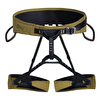Hansjörg Auer, new route Bruderliebe on the Marmolada, Dolomites
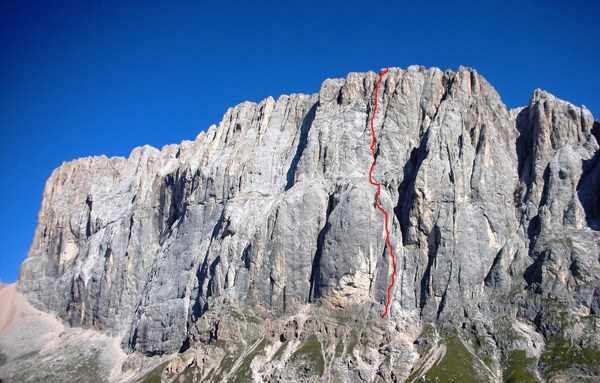
 1 / 18
1 / 18 Damiano Levati
Damiano Levati
Brother love. Bruderliebe. That's the name of the new route up the South Face of the Marmolada, established by Austrian alpinist Hansjörg Auer and his brother Vitus this summer and freed on 21 August. 19 pitches in total, forged from below which in the lower section climb the famous Elephant's back, crossing “40 anni per il Falier” and “Verena Vinus” to ascend those beautiful, compact grey pillars with difficulties up to 8b/8b+. In some sections the new route runs 10, 15m next to “40 anni per il Falier”. At first glance it seems pretty compressed. But, as Auer himself explains, the pillars are so beautiful he couldn't resist the call... It's superfluous to say that Bruderliebe is now one of the hardest outings up the legendary South Face.
But that's not all. After the new route, Auer remained on the South Face of the Marmolada and also carried out the first free ascent of Colpo di Coda, established in 2006 by Maurizio Giordani and Massimo Faletti. And he also added an alternative finish to Schwalbenschwanz. We obviously used this as a pretext to discover more, not only about Bruderliebe, but also about his love for the Marmolada in particular and climbing in general.
Hansjörg, tell us about the new route
Bruderliebe is 19 pitches long with difficulties up to 8b/8b+. I established it ground-up this summer together with my brother during a fantastic 8 day period. The route takes a line up the Ombretta, on the right-hand side of the Elephant's back, just to the right of '40 anni per il Falier'. It crosses 'Verena Vinus' on the belay after pitch four, and crosses 40 anni on the belay after pitch 6. The major difficulties are in the lower section where the rock is fantastic and after a couple of pitches up to 7c it culminates with the 50m crux pitch. The difficulties then ease off considerably and on the upper section the rock quality is no longer as outstanding.
One could say that route is pretty compressed between one line and the other.
Generally I'm not a fan of routes who cross established lines, but this project had been in the back of my mind since 2003, when I first walked up from Malga Ciapela to Rifugio Falier. Two massive sheets of overhanging, grey rock. They were engraved in my memory and this year I simply couldn't hold myself back, these two pillars are so obvious!
Then on the upper pillar you veered left
Yes, I had hoped to keep to the right of '40 anni per il Falier' and reach the open corner system. But unfortunately the rock was suddenly too compact, too smooth, so I was forced to cross '40 anni' once more. I would have like to have continued up that pillar but in the end I decided to continue in my style of first ascending. Perhaps one day it'll be ascended with lots of bolts, but it'll become a hard sport pitch, not an alpine outing.
After preparing the route the time came for the first free ascent.
Yes, establishing the route was a long process, also because I had some fairly unstable weather in the beginning, but after 8 days it all boiled down to that single point on the crux pitch. I'd worked this on 9 occasions over 4 days, and when I sent the route I redpointed this on my third try. Reaching the belay was a very emotional moment, very very intense. And then, 11.5 hours after the start, we reached the summit ridge. On the lower section my brother Vitus followed me with jumars, while he climbed the upper section. This was his first route on the Marmolada!
What's the gear like on Bruderliebe?
I think it reflects the Marmolada style, i.e a mix of trad, pegs and bolts. Almost all the belays on the lower part have one bolt and peg, while on the upper section I placed three pegs, which I left in-situ. I have to say though that some of the climbing is fairly run-out.
You graded it 8b/8b+
In the beginning I wasn't sure about the grade of the crux pitch. It´s always hard when you work a route for a long time. But at the end of the day, I felt it somewhere in the region of 8b/8b+. I tried to be as honest as possible and as usual those who repeat the route will be able to tell us more.
After which you then climbed some other routes
Yes, I freed Maurizio Giordani and Massimo Faletti's 2006 Colpo di Coda and the big roof which had been climbed with aid at A2 now goes free at 7b. I teamed up with Gerhard Fiegl and we on-sighted the route in 9.5 hours on 24 August. Perhaps ours was the first repeat? Who knows! What is important though is that this route offers super nice climbing along one of the last independent lines on the South Face. Four days later with Gerhard we established a direct exit to Schwalbenschwanz, the route established by Luigi Rieser and Reinhard Schiestl. This 4 pitch variation could be considered a combination to Don Quixote. Perfect limestone, exposed climbing, alpine protection which we called Coco Jambo and have graded 6c+.
Right, let's now take a step back in time. Tell us how it all began
As I young boy I was always in the mountains with my family and I started climbing when I was 12 with a course organised by the Austrian Alpine Club and run by none other than Roland Mittersteiner. In the beginning I only did some sporadic sport climbing, I was taken in by dangerous alpine routes, by ice climbing and mixed climbs in the western Alps. When I was 20 I turned my attention to sport climbing once again and the multi-pitches in the Alps.
Can you remember that first time without a rope?
Yes, precisely. Even if I can't remember the year, perhaps it was in 2001, I remember the exact moment very well indeed, on a sports climb called "Mini tour", graded 5+. I was at the crag with my brother, just before nightfall, and while he was distracted by something else I began climbing. I was immediately fascinated by the sensation. This was then followed by the first multi-pitches without a rope.
The first time we spoke about you was in 2006 with your solo ascent of the nearby Tempi Moderni.
Yes, but in truth I wanted to solo it in 2005, two days after having climbed it with my brother Matthias. But he prohibited me. So I soloed Don Quixote in autumn 2005, then in June 2006 the time came for Tempi Moderni.
But if I'm not mistaken, you'd fallen off Tempi Moderni the year before when tied in to your brother...
It's true that I'd never managed to free the first pitch, but this was always due to the extremely cold temperatures. What struck me though wasn't the first pitch, but the upper headwall. Climbing this back in 1982 from the ground-up, without ever having explored it previously, and climbing it free, is a testament of the mental strength and unique talent of Heinz Mariacher. I respect this fully.
After this route established by Heinz Mariacher and Luisa Iovane a year went by, then you returned to the Marmolada, this time with your sights set on the Fish route first ascended by Igor Koller and Jindrich Sustr. This solo resulted in your international breakthrough.
I don't really like defining it as an “international breakthrough”. I simply became more known than before. This has its advantages and disadvantages. In the beginning I wasn't at ease with new situation, but you learn to live with it. I've always tired to live my free solos as something very personal and I've always avoided the media side of these ascents. I have to admit though that I've benefited a lot from it, but I've also developed new horizons and I don't depend on soloing. Now I understand a whole lot better why at the time my ascent was interpreted in such a special manner. With hindsight, what was special weren't the 3 hours on the rock face, but the way I took things for granted, the extremely cheeky manner with which I carried out this project. In some respects truly genial!
You're travelled extensively, but evidently you're special relationship with the Dolomites still holds strong, in particular with the Queen.
I've always been fascinated by the Dolomites, always been very curious to find out more. I remember exactly the first time I set sight on the South Face of the Marmolada. That steep path up to Malga Ciapela, then the first glance. I immediately got goose bumps, but couldn't explain why. Now I know that when I'm up there, I'm happy.
New routes or first ascents? How do you choose your objectives
I'm a free climber, body and soul. So the difference between one and the other isn't that great. Here in the Alps, and in particular the Dolomites, there are still so many aid routes that need freeing, some of which are unique, often completely forgotten about. So before establishing a new route which has to cross established lines because of lack of space, I usually prefer spending my time freeing old routes.
Sorry but you've asked for it... at this point we have to return to Bruderliebe and her neighbours...
n the specific case of Bruderliebe, as I said before the call was too strong. And the fact that it is close to other routes really doesn't disturb the overall experience. For example, on the crux section '40 anni' is more than 10m away and you can't traverse off in the middle of the pitch. So in this case I consider it an independent line.
A technical, timeless question: pegs or bolts. And what's the differences?
Pegs or bolts? Both! It simply depends on how I feel. How I establish a new route depends on many factors: the rock formation, the difficulty of the climb, the risks, my form. Silberschrei for example was my first experience of establishing a route ground-up without bolts. Very exciting!
The best thing that happened to you
It may seem strange, but the best thing that happened to me were the numerous accidents I had following my solo of The Fish route. The summer of 2008, with the serious injuries I sustained in Yosemite, gave me a lot. I learnt that climbing is a lot, but it isn't everything. I realised for the first time that I cannot always be on top form and that my body needs time to recover. Honestly though, it was these accidents which changed in me my risk awareness. I still like to risk, but I no longer need to do it always. Perhaps I've also learned when I can take risks, and when I cannot.
This is the first time you mention risk
I'm definitely someone who is often in touch with risk. I always try to be aware of the risks I'm taking. In certain situations I know that I simply cannot fall, and I automatically accept the consequences. At times it's worth, on a completely personal level, exposing myself to these sort of risks.
When have you risked most
I think the most dangerous risk is when you're not aware of the danger you're in. Last year I almost fell 50m off the Marmolada. I was climbing up a relatively easy pedestal with the rope tied behind my back. I believed it wasn't risky and then it happened. I'd already completely lost contact with the rock, but somehow I managed to save myself. An error of this sort can't happen when you're aware of the risk you're taking.
What has changed in these years?
I've become older. And evolved. At times I climb without a rope, and like before there are thoughts and dreams. But I've never felt the right moment for something great. To tell the truth yes, once, but then it began to rain. And to think that I'd already reached the base of the climb...
So you still dream so dangerously intensively?
Yes, at times... but the step from dream to reality isn't that easy. But there is one thing I often think about...
Hansjörg Auer - Marmolada
Hansjörg Auer sponsored by: The North Face, La Sportiva, Edelrid, Ötztal, Bergshop.Com, Smith Optics
| Planetmountain | |
| News Hansjörg Auer | |
| Hansjörg Auer free solo Attraverso il Pesce in Marmolada | |
| Expo.Planetmountain | |
| Expo The North Face | |
| Expo La Sportiva | |
| www | |
| www.thenorthfacejournal.com | |
| www.hansjoerg-auer.at | |



 Copia link
Copia link

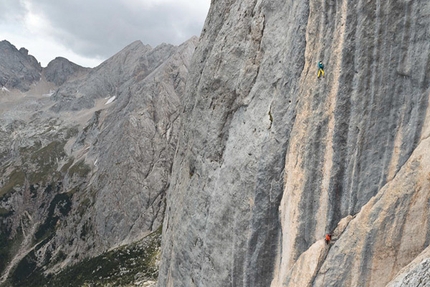
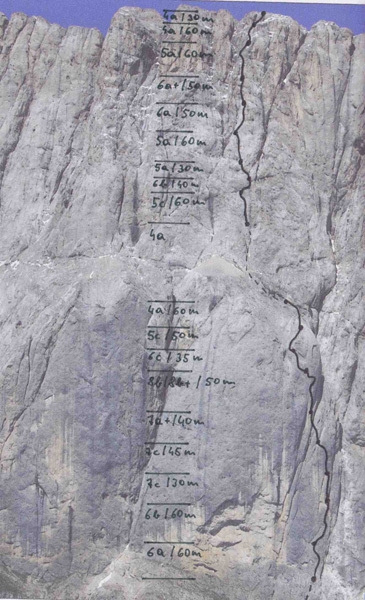
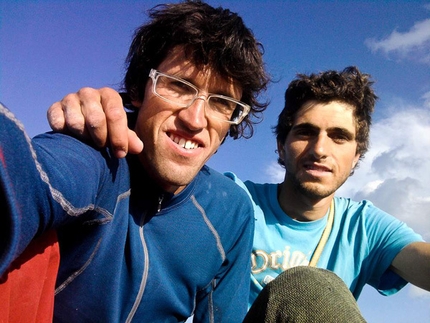
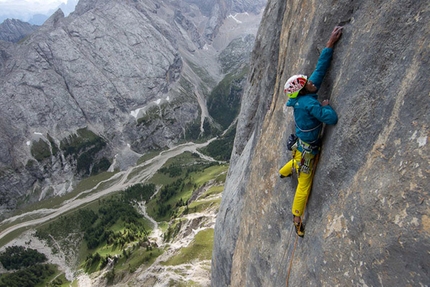
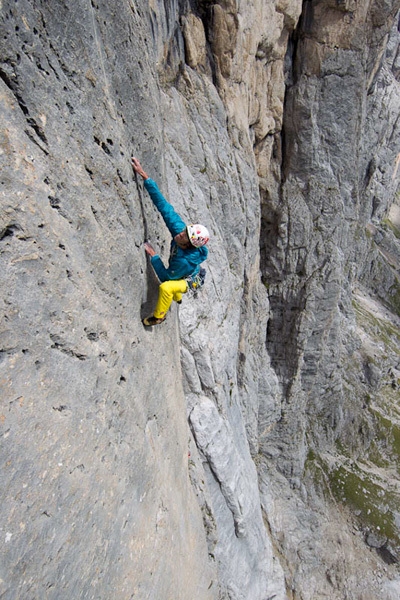
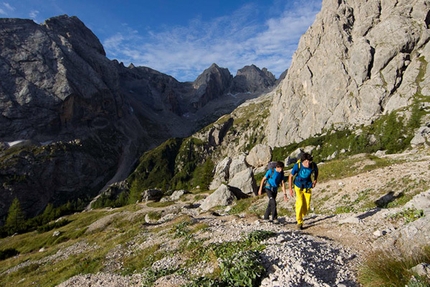
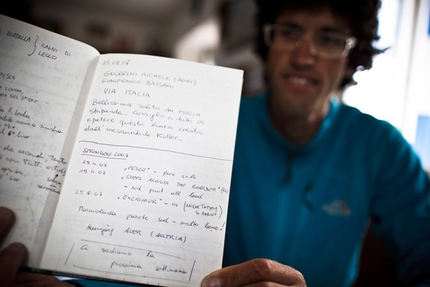

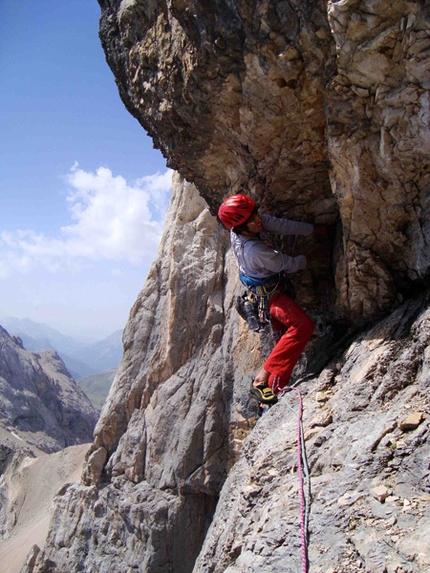
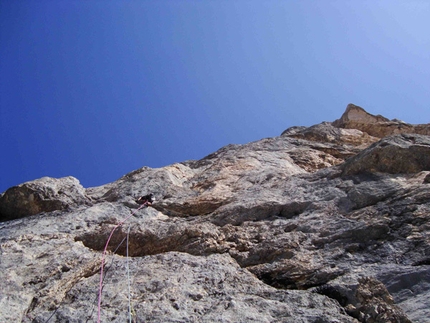
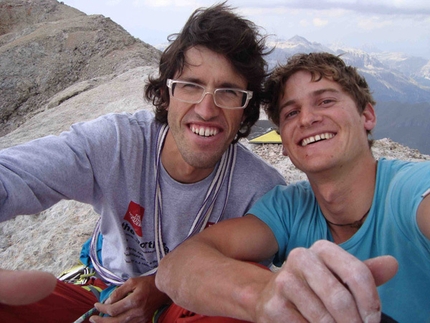
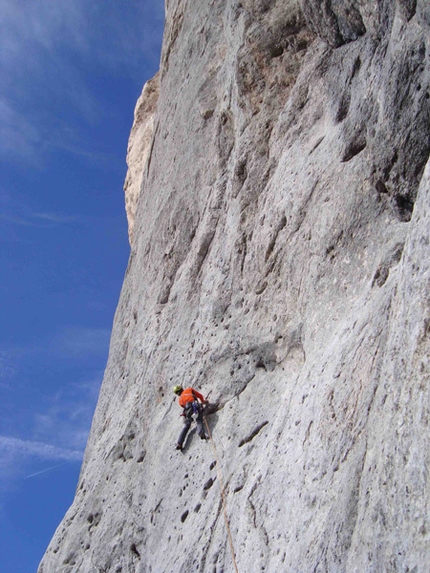
 See all photos
See all photos

















